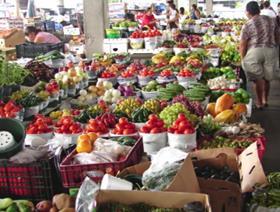
A report released by the Institute of Medicine (IOM) in the US has stated that US consumers take in levels of sodium in their food that 'far exceeds' public health recommendations.
In the study, the IOM Committee noted that the average American consumes over 3,400mg of sodium each day, around 50 per cent more than the 2,300mg recommended in the 2005 Dietary Guidelines for Americans.
An over-consumption of sodium increases the risk of high blood pressure, with analysts suggesting that a population-wide cut in sodium intake could prevent more than 100,000 deaths annually.
IOM's report, entitled 'Strategies to Reduce Sodium Intake in the United States', the Committee concluded that a coordinated approach must be taken to reduce sodium content in foods, including new government standards for acceptable levels in processed and restaurant meals.
'Some level of sodium is required in a healthy diet, however the IOM report suggests what we've long known, that most people are consuming too much,' said Elizabeth Pivonka, president and CEO of the Produce for Better Health Foundation (PBH). 'We know that high sodium intake is associated with an increased risk of high blood pressure and strokes, and that most fruit and vegetables are naturally low in sodium or sodium-free.
'If people simply focus on eating more fruits and veggies, both at home and when dining out, their diets will generally be lower in sodium, which could lower their risks for these health problems,' she added. 'Conversely, hypertension has also been associated with diets too low in potassium. Fruits and vegetables are some of the best sources of potassium in the diet, so adding more of them can help lower health risks in this way too.'
Ms Pivonka noted that canned vegetables contributed very little sodium to the diet when compared with processed meats, cheeses, baked good and other foods, and suggested that some fresh produce could even be used to help adjust tastebuds to a lower level of sodium in foods.
'Be aware of the salt and sodium content in the foods you eat by becoming a label reader,' she advised. 'You can easily decrease your daily sodium intake by replacing some processed meats, cookies and sweets with fruit and vegetables. Making sure you're getting the recommended amount of fruit and vegetables daily is a great way to begin.'



